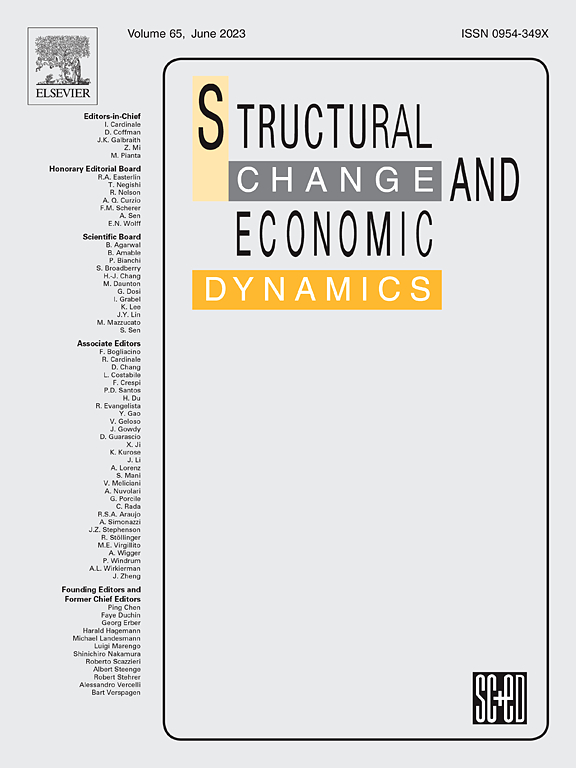Two- and half-centuries of equilibrium economics: Adam Smith and the evisceration of the spatial dimension from the theory of production
IF 5
2区 经济学
Q1 ECONOMICS
引用次数: 0
Abstract
Two concepts of Smith sealed off the relevance of the mercantilist and physiocratic traditions. Both concepts involve, although in different ways, the evisceration of the spatial dimension from the theory of production. The first, the division of labor, identifies the source of productivity and wealth while disregarding temporal heterogeneity across regions. This disregard produced an equilibrium economics that is, at first approximation, ill-equipped to explain the necessity of the state to protect its region, i.e., the ubiquity of protectionism. The second concept, the productive/unproductive labor distinction, specifies the source of steady growth while disregarding the environmental degradation arising from such growth. This disregard generated an equilibrium economics that is, at first approximation, ill-equipped to explain the necessity of technological and institutional innovations, i.e., the ubiquity of entrepreneurship. To account for both phenomena—i.e., the ubiquity of protectionism and entrepreneurship—we need to incorporate the spatial dimension into production theory.
两个半世纪的均衡经济学:亚当·斯密与从生产理论中剔除空间维度
斯密的两个概念隔绝了重商主义和重农主义传统的相关性。这两个概念虽然方式不同,但都涉及从生产理论中剔除空间维度。第一个是劳动分工,它确定了生产力和财富的来源,同时忽略了地区间的时间异质性。这种漠视产生了一种均衡经济学,乍一看,它无法解释国家保护其所在地区的必要性,即保护主义无处不在。第二个概念是生产性劳动/非生产性劳动的区分,它明确了稳定增长的来源,而忽视了这种增长所引起的环境退化。这种漠视产生了一种均衡经济学,乍一看,它无法解释技术和制度创新的必要性,即企业家精神的无处不在。为了解释这两种现象,即。我们需要将空间维度纳入生产理论。
本文章由计算机程序翻译,如有差异,请以英文原文为准。
求助全文
约1分钟内获得全文
求助全文
来源期刊

Structural Change and Economic Dynamics
ECONOMICS-
CiteScore
9.60
自引率
4.90%
发文量
159
期刊介绍:
Structural Change and Economic Dynamics publishes articles about theoretical, applied and methodological aspects of structural change in economic systems. The journal publishes work analysing dynamics and structural breaks in economic, technological, behavioural and institutional patterns.
 求助内容:
求助内容: 应助结果提醒方式:
应助结果提醒方式:


